Section 17
Spelling Lists and Activities
17.1 Fundamentals
17.2 Spelling Word Lists
17.3 Word Lists Used with Activities
17.4 Word Lists with Partial Emphasis
17.5 Marked Words in a List
17.6 Definition Lists
17.7 Word Lists in Foreign Language Texts
17.8 Syllabified Words
17.9 Blanks and Omissions
17.10 Intentional Errors
17.11 Crossed-Out Letters
17.12 Insertions
17.13 Nonalphabetical Signs
17.14 Samples
a. Ignore font attributes used for entire spelling word lists.
b. List spelling words vertically using 1-3 margins.
c. Contract the first writing of the spelling word or phrase.
d. Repeat the words/phrases in uncontracted braille.
e. Leave one blank cell between the contracted and uncontracted words. When the list consists of phrases, leave two blank cells between the phrases.
f. A list of spelling words may appear again in the lesson, either as a partial or complete list, often as a boxed sidebar. Repeat such word lists as they appear in print using contracted braille only.
g. Longer word lists, showing only the contracted form, may be changed to columns. This is not recommended for early grade material.
(See Sample 17-1: Spelling List on page 17-14.)
Alphabetize
Letter order
Look it up in the dictionary
Match letters
Misspelled
Scrambled
Spelled differently
Start with the same letter
Write the base word
Word search puzzle
Write a word that means the same.
Write the missing word.
Write the word that belongs.
Write the word that rhymes.
17.4 Word Lists with Partial Emphasis
a. Follow print for emphasis.
b. Transcribe each word contracted, uncontracted, and uncontracted with partial emphasis.
c. If required, insert the appropriate termination indicator to indicate the end of the emphasis in a partially emphasized word.
d. Leave one blank cell between each spelling of single words. Leave two blank cells between phrases.
e. List all words and/or phrases vertically using 1-3 margins.
(See Sample 17-6: Word List with Partial Emphasis on page 17-19.)
a. Begin the symbol or icon in cell 1 followed by at least one space.
b. Align the beginning character of all items. Begin runovers two cells to the right of the beginning of the items.
c. Transcribe multi-column lists with marked items vertically.
d. List all symbols/icons on the Special Symbols page, or in a transcriber's note before the text. Exception: The bullet symbol (dots 456, 256) is not required to be listed on the Special Symbols page.
(See Sample 17-7: Word List with Two Different Print Symbols on page 17-20.)
a. Ignore entry word font attributes, except when distinction is required, e.g., foreign words.
b. Leave one blank cell between an entry word and its definition when the entry word is followed by punctuation, or if the definition starts with an uppercase letter.
c. Leave two blank cells between entries and definitions when the entry words are phrases instead of individual words, if they are not followed by punctuation, or if the definition begins with a lowercase letter.
(See Sample 17-8: Definition List with Two Spaces After Entry Word on page 17-21 and Sample 17-9: Word Usage List on page 17-22.)
a. Ignore special typeface used for the listed words.
b. In a word list with translations, insert a colon following the entry word and continue the translation on the same braille line. Do not use columnar format.
Example 17-1: Vocabulary/Word List in a Foreign Language Text

el medio ambiente3 5viron;t
el mundo3 _w
c. If a single phrase with its translation is too long to fit across the width of the braille page, begin the foreign language item in cell 1 and the translation in cell 3. All runovers begin in cell 5.
a. Begin the longest article, reflexive pronoun, etc. in cell 1.
b. Align the initial letters of the foreign language words.
c. The left margin is the braille cell in which the initial letter of the entry words appears.
d. Adjust each braille page to align the main entry words on that page.
e. All runovers are two cells to the right of the main entry left margin. If the main entry begins in cell 4, runovers are in cell 6; if the main entry begins in cell 5, runovers are in cell 7.
f. Begin subentries two cells to the right of the main entry margin and adjust the runovers accordingly. If the main entry begins in cell 5, all subentries begin in cell 7 and all runovers begin in cell 9.
Example 17-2: Foreign Language Vocabulary List with Articles

⠀la medicina3 m$ic9e
las pastillas1 las pilodoras3 pills1
⠀⠀⠀⠀⠀⠀tablets
⠀el sintoma3 symptom
⠀la tos3 c\<
⠀⠀⠀⠀toser3 to c\<
a. Do not divide a syllabified word between lines unless it is too long to fit on a single line. If a word is divided between lines, it must be at a syllable break. (See Sample 17-10: Syllabified Words in a Spelling Activity on page 17-23.)
b. Follow print when print uses spaces, dots, hyphens, etc. to separate syllables.
Example 17-3: Syllabified Words in a Spelling List

⠀⠀⠀⠀⠀⠀⠀⠀⠀⠀⠀⠀⠀⠀⠀⠀⠀⠀⠀⠀⠀⠀⠀⠀⠀⠀⠀⠀⠀⠀⠀⠀⠀⠀⠀⠀⠀⠀⠀⠀
en er gy
mo tion
ve loc i ty
a. Follow print for whatever symbol is used to represent a blank to be filled in.
b. If applicable, use contractions in the portions of the word attached to the low line or other symbol.
Example 17-4: Partial Word Blanks

,! tunnels 9 ,bo/on >e v p]plex.-4
,:5 >e ! .-s due8
,i 9.-$ ! 9t5s;y4
,>e y go+ to me.-8
,don't ac.- yet4
a. Follow print for symbols used to show omission. A substitution may be made if accurate representation of the print symbol in braille would hinder the reader's recognition of the concept under discussion. Explain the choice of the substituted symbol in a transcriber's note.
Example 17-5: Omitted Letters Represented by Symbols
s"9"9"9"9"9"9"9d
b. Follow print when hyphens indicate a specific number of missing letters.
Example 17-6: Omitted Letters Represented by Hyphens
;s-------;d
17.10 Intentional Errors
Example 17-7: Unmarked Errors to be Identified

today ,i wint shopping for new shoes8
,the weather has turned verry cold for
,easter4 ,lets go for icecream4 ,please6
wash your hands before make the
sandwich4
(See Sample 17-13: Marked Intentional Spelling Errors on page 17-26 and Sample 17-14: Errors to Be Identified in Exercise on page 17-27.)
a. Transcribe words with crossed-out letters in uncontracted braille.
b. Show the word as spelled, without indicating the crossed-out letters.
c. Then repeat the word, substituting a hyphen - (36) for each crossed-out letter.
d. Explain the use of the hyphen in a transcriber's note. Sample:
Words with crossed-out letters are uncontracted, then repeated with a hyphen substituted for each crossed-out letter.
Example 17-8: Crossed-Out Letters in Word List

⠀⠀⠀⠀⠀⠀@.<,^ws ) cross$-\ lrs >e
⠀⠀⠀⠀uncontract$1 !n rep1t$ ) a hyph5
⠀⠀⠀⠀sub/itut$ = ea* cross$-\ lr4@.>
⠀⠀⠀⠀⠀⠀⠀⠀⠀⠀⠀⠀⠀⠀⠀⠀⠀⠀⠀⠀⠀⠀⠀⠀⠀⠀⠀⠀⠀⠀⠀⠀⠀⠀⠀⠀⠀⠀⠀⠀
gear ge-r
heater he-ter
ideal ide-l
jeans je-ns
a. Follow points in Formats, §17.11.1 a–c.
b. Enclose the repeated word in an embedded transcriber's note to distinguish it from surrounding text.
c. Explain this usage in a transcriber's note. Sample:
Words with crossed-out letters are uncontracted, then repeated with a hyphen substituted for each crossed-out letter. The repeated word is enclosed within transcriber's note indicators.
Example 17-9: Crossed-Out Letters in Sentences

⠀⠀⠀⠀⠀⠀@.<,^ws ) cross$-\ lrs >e
⠀⠀⠀⠀uncontract$1 !n rep1t$ ) a hyph5
⠀⠀⠀⠀sub/itut$ = ea* cross$-\ lr4 ,!
⠀⠀⠀⠀rep1t$ ^w is 5clos$ )9 transcrib]'s
⠀⠀⠀⠀note 9dicators4@.>
⠀⠀⠀⠀⠀⠀⠀⠀⠀⠀⠀⠀⠀⠀⠀⠀⠀⠀⠀⠀⠀⠀⠀⠀⠀⠀⠀⠀⠀⠀⠀⠀⠀⠀⠀⠀⠀⠀⠀⠀
,! heater @.<he-ter@.> 9 ! room did n
⠀⠀"w4
,my jeans @.<je-ns@.> %runk 9 ! dry]4
,did y pack yr gear @.<ge-r@.> = ! camp+
⠀⠀trip8
,t is my ideal @.<ide-l@.> vaca;n6
a. Transcribe words with inserted letters in uncontracted braille.
b. Follow print for use of enclosure symbols.
Example 17-10: Inserted Letters
write writ"<e">ing
c. Words that are followed by a space and a word part that is to be inserted or combined should be transcribed without contractions.
d. Transcribe words that are to be combined with other words or word parts in uncontracted braille.
e. Follow print spacing of the text that is to be inserted.
Example 17-11: Words Spaced from Inserted Letters

⠀⠀⠀⠀,write li/ ^ws by add+ ! 5d+ 9
⠀⠀⠀⠀p>5!ses to ea* ^w4
#a4 wrap "<ing">
#b4 cute "<er">
#c4 early "<est">
a. Follow the guidelines in Formats, §17.11 for transcribing crossed-out letters.
b. Follow print for use and spacing of enclosure symbols.
Example 17-12: Crossed-Out Letters and Insertions
⠀⠀⠀⠀⠀⠀@.<,^ws ) cross$-\ lrs >e
⠀⠀⠀⠀uncontract$1 !n rep1t$ ) a hyph5
⠀⠀⠀⠀sub/itut$ = ea* cross$-\ lr4@.>
⠀⠀⠀⠀⠀⠀⠀⠀⠀⠀⠀⠀⠀⠀⠀⠀⠀⠀⠀⠀⠀⠀⠀⠀⠀⠀⠀⠀⠀⠀⠀⠀⠀⠀⠀⠀⠀⠀⠀⠀
,! beep+ 0 continue"<ous">4
⠀⠀@.<continu-"<ous">@.>
,i try"<ied"> @.<tr-"<ied">@.> to run a
⠀⠀m>a?on4
a. Transcribe all text in word formation "equations" in uncontracted braille.
b. If the result of the equation is a complete word, add the contracted form of the word at the end of the equation, enclosed in transcriber's note indicators. Ignore any print emphasis.
c. Use the appropriate symbols when mathematical indicators are used in discussions of word formation. List the symbols on the Special Symbols page. See UEB, §3.17, Mathematical Signs.)
(See Sample 17-15: Word Equation Using Mathematical Symbols on page 17-28 and Sample 17-16: Crossed-Out Letters and Equals Sign on page 17-29.)
Example 17-13: Partial Emphasis Using Mathematical Symbols

⠀⠀⠀⠀,su6ixes ) ,3sonants
amaze "6 ^1ment "7 amaze^1ment
⠀⠀@.<amaze;t@.>
hope "6 ^1ful "7 hope^1ful @.<hope;l@.>
Sample 17-2: Activity Word List for Alphabetizing, page
17-15
Sample 17-3: Pronunciation Words in a List, page 17-16
Sample 17-4: Scrambled Words, page 17-17
Sample 17-5: Activity Word List, page 17-18
Sample 17-6: Word List with Partial Emphasis, page 17-19
Sample 17-7: Word List with Two Different Print Symbols, page 17-20
Sample 17-8: Definition List with Two Spaces after Entry Word, page 17-21
Sample 17-9: Word Usage List, page 17-22
Sample 17-10: Syllabified Words in a Spelling Activity, page 17-23
Sample 17-11: Omitted Letters Identified in Directions, page 17-24
Sample 17-12: Unmarked Intentional Spelling Errors, page 17-25
Sample 17-13: Marked Intentional Spelling Errors, page
17-26
Sample 17-14: Errors to Be Identified in Exercise, page
17-27
Sample 17-15: Word Equation Using Mathematical Symbols, page 17-28
Sample 17-16: Crossed-Out Letters and Equals Sign, page
17-29
Sample 17-17: Word Formation Using Mathematical Symbols, page 17-30
Sample 17-18: Word Formation Using Arrows, page 17-31
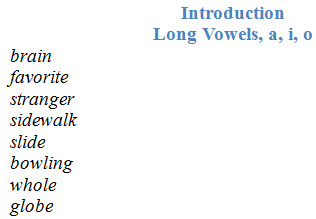
1⠀⠀⠀⠀⠀⠀⠀⠀⠀⠀⠀⠀⠀⠀⠀⠀,9troduc;n
2⠀⠀⠀⠀⠀⠀⠀⠀⠀⠀⠀,l;g ,v[els1 a1 i1 o
3⠀⠀⠀⠀⠀⠀⠀⠀⠀⠀⠀⠀⠀⠀⠀⠀⠀⠀⠀⠀⠀⠀⠀⠀⠀⠀⠀⠀⠀⠀⠀⠀⠀⠀⠀⠀⠀⠀⠀⠀⠀
4⠀bra9⠀brain
5⠀favorite
6⠀/rang]⠀stranger
7⠀sidewalk
8⠀slide
9⠀b[l+⠀bowling
10 :ole⠀whole
11 globe
12 ⠀⠀⠀⠀⠀⠀⠀⠀⠀⠀⠀⠀⠀⠀⠀⠀⠀⠀⠀⠀⠀⠀⠀⠀⠀⠀⠀⠀⠀⠀⠀⠀⠀⠀⠀⠀⠀⠀⠀⠀
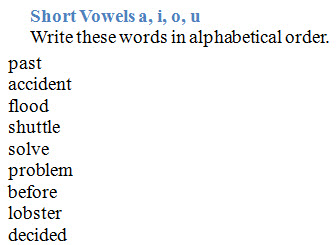
1⠀⠀⠀⠀⠀⠀⠀⠀⠀,%ort ,v[els a1 i1 o1 ;u
2⠀⠀⠀⠀⠀⠀⠀⠀⠀⠀⠀⠀⠀⠀⠀⠀⠀⠀⠀⠀⠀⠀⠀⠀⠀⠀⠀⠀⠀⠀⠀⠀⠀⠀⠀⠀⠀⠀⠀⠀⠀
3⠀⠀⠀⠀⠀,write ^! ^ws 9 alphabetical ord]4
4⠀past
5⠀accident
6⠀flood
7⠀shuttle
8⠀solve
9⠀problem
10 before
11 lobster
12 decided
13 ⠀⠀⠀⠀⠀⠀⠀⠀⠀⠀⠀⠀⠀⠀⠀⠀⠀⠀⠀⠀⠀⠀⠀⠀⠀⠀⠀⠀⠀⠀⠀⠀⠀⠀⠀⠀⠀⠀⠀⠀

10 ,! ^ws 9 ! foll[+ li/ 3ta9 ! lrs ie or
11 ;ei4 ,le>n h[ to pron\nce ea* ^w4
12 ⠀⠀⠀⠀⠀⠀⠀⠀⠀⠀⠀⠀⠀⠀⠀⠀⠀⠀⠀⠀⠀⠀⠀⠀⠀⠀⠀⠀⠀⠀⠀⠀⠀⠀⠀⠀⠀⠀⠀⠀
13 their
14 brier
15 height
16 weight
17 ⠀⠀⠀⠀⠀⠀⠀⠀⠀⠀⠀⠀⠀⠀⠀⠀⠀⠀⠀⠀⠀⠀⠀⠀⠀⠀⠀⠀⠀⠀⠀⠀⠀⠀⠀⠀⠀⠀⠀⠀
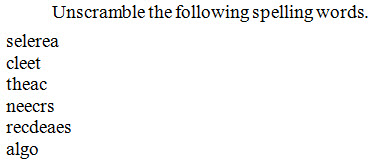
15 ⠀⠀⠀⠀,unscramble ! foll[+ spell+ ^ws4
16 selerea
17 cleet
18 theac
19 neecrs
20 recdeaes
21 algo
22 ⠀⠀⠀⠀⠀⠀⠀⠀⠀⠀⠀⠀⠀⠀⠀⠀⠀⠀⠀⠀⠀⠀⠀⠀⠀⠀⠀⠀⠀⠀⠀⠀⠀⠀⠀⠀⠀⠀⠀⠀
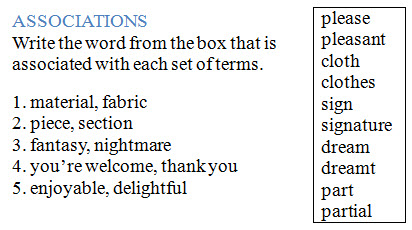
5⠀⠀⠀⠀⠀,,associa;ns
6⠀⠀⠀⠀⠀,write ! ^w f ! box t is associat$ )
7⠀⠀⠀⠀⠀ea* set ( t]ms4
8⠀⠀⠀⠀⠀⠀⠀⠀⠀⠀⠀⠀⠀⠀⠀⠀⠀⠀⠀⠀⠀⠀⠀⠀⠀⠀⠀⠀⠀⠀⠀⠀⠀⠀⠀⠀⠀⠀⠀⠀⠀
9⠀7777777777777777777777777777777777777777
10 pl1se
11 pl1sant
12 clo?
13 clo!s
14 444
15 "pial
16 gggggggggggggggggggggggggggggggggggggggg
17 ⠀⠀⠀⠀⠀⠀⠀⠀⠀⠀⠀⠀⠀⠀⠀⠀⠀⠀⠀⠀⠀⠀⠀⠀⠀⠀⠀⠀⠀⠀⠀⠀⠀⠀⠀⠀⠀⠀⠀⠀
18 #a4 mat]ial1 fabric
19 #b4 piece1 sec;n
20 #c4 fantasy1 ni<tm>e
21 #d4 y're welcome1 ?ank y
22 #e4 5joyable1 deli<t;l

10 ⠀⠀⠀⠀,^ws to ,ma/]
11 ,make x yr goal to le>n to spell ^!
12 fifty ^ws ? ye>4 ,use !m 9 yr writ+ &
13 practice writ+ !m until spell+ !m
14 correctly comes automatically4
15 ⠀⠀⠀⠀⠀⠀⠀⠀⠀⠀⠀⠀⠀⠀⠀⠀⠀⠀⠀⠀⠀⠀⠀⠀⠀⠀⠀⠀⠀⠀⠀⠀⠀⠀⠀⠀⠀⠀⠀⠀
16 a3id5tally⠀accidentally
17 ⠀⠀a^1cc^'ident^1ally
18 advisable⠀advi^1sa^'ble
19 >range;t⠀arrangement⠀a^1rr^'angement
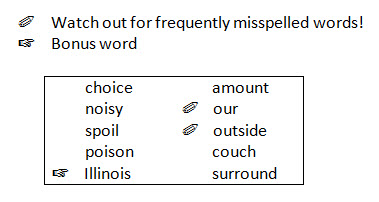
5⠀@$pen ,wat* \ = frequ5tly misspell$ ^ws6
6⠀@$f ,bonus ^w @.<;f is = f+]@.>
7⠀⠀⠀⠀⠀⠀⠀⠀⠀⠀⠀⠀⠀⠀⠀⠀⠀⠀⠀⠀⠀⠀⠀⠀⠀⠀⠀⠀⠀⠀⠀⠀⠀⠀⠀⠀⠀⠀⠀⠀⠀
8⠀7777777777777777777777777777777777777777
9⠀⠀⠀⠀⠀⠀⠀choice
10 ⠀⠀⠀⠀⠀⠀noisy
11 ⠀⠀⠀⠀⠀⠀spoil
12 ⠀⠀⠀⠀⠀⠀poison
13 @$f⠀⠀⠀,illinois
14 ⠀⠀⠀⠀⠀⠀amount
15 @$pen⠀our
16 @$pen⠀outside
17 ⠀⠀⠀⠀⠀⠀couch
18 ⠀⠀⠀⠀⠀⠀surround
19 gggggggggggggggggggggggggggggggggggggggg
20 ⠀⠀⠀⠀⠀⠀⠀⠀⠀⠀⠀⠀⠀⠀⠀⠀⠀⠀⠀⠀⠀⠀⠀⠀⠀⠀⠀⠀⠀⠀⠀⠀⠀⠀⠀⠀⠀⠀⠀⠀

4⠀,2l >e def9i;ns ( ? lesson's ^ws z !y >e
5⠀us$ 9 ! /ory ab ,tony4
6⠀⠀⠀⠀⠀⠀⠀⠀⠀⠀⠀⠀⠀⠀⠀⠀⠀⠀⠀⠀⠀⠀⠀⠀⠀⠀⠀⠀⠀⠀⠀⠀⠀⠀⠀⠀⠀⠀⠀⠀⠀
7⠀doctor⠀⠀a physician
8⠀he>t⠀⠀organ t pumps blood "?\t ! body
9⠀⠀⠀⠀⠀⠀⠀⠀⠀⠀⠀⠀⠀⠀⠀⠀⠀⠀⠀⠀⠀⠀⠀⠀⠀⠀⠀⠀⠀⠀⠀⠀⠀⠀⠀⠀⠀⠀⠀⠀⠀

10 ⠀⠀⠀⠀,gloss>y ( ,usage
11 ,? gloss>y is 9t5d$ to help y ) "s ( !
12 mo/ commonly tr\ble"s ^ws & phrases4
13 ⠀⠀⠀⠀⠀⠀⠀⠀⠀⠀⠀⠀⠀⠀⠀⠀⠀⠀⠀⠀⠀⠀⠀⠀⠀⠀⠀⠀⠀⠀⠀⠀⠀⠀⠀⠀⠀⠀⠀⠀
14 advice1 advise3 .1,advice is a n\n2
15 ⠀⠀.1advise is a v]b4
16 a6ect1 e6ect3 ,z v]bs1 to .1a6ect is to
17 ⠀⠀9flu;e1 to .1e6ect is to br+ ab4
18 ⠀⠀.1,e6ect is m commonly us$ z a n\n
19 ⠀⠀m1n+ 8result40

1⠀⠀⠀⠀⠀,syllable ,divi.n ,rules
2⠀#a4 ,divide 2t #b 3sonants "<rab-bit1
3⠀⠀⠀mon-key">
4⠀#b4 ,divide 2t #b ^ws "<back-yard1
5⠀⠀⠀lip-stick">
6⠀#c4 ,divide 2f & af bl5ds "<trans-fer1
7⠀⠀⠀brink-man-ship">
8⠀⠀⠀⠀⠀⠀⠀⠀⠀⠀⠀⠀⠀⠀⠀⠀⠀⠀⠀⠀⠀⠀⠀⠀⠀⠀⠀⠀⠀⠀⠀⠀⠀⠀⠀⠀⠀⠀⠀⠀⠀

1⠀⠀⠀⠀⠀,us+ ,spell+ ,patt]ns
2⠀⠀⠀⠀⠀,write ea* ^w1 add+ ie or ;ei4 ,if y
3⠀⠀⠀⠀⠀>e n sure ab a spell+1 *eck !
4⠀⠀⠀⠀⠀dic;n>y4
5⠀⠀⠀⠀⠀⠀⠀@.<,pr9t uses a squ>e to repres5t
6⠀⠀⠀⠀⠀! omis.n ( lrs1 9 brl an "uscore is
7⠀⠀⠀⠀⠀us$ = ! omis.ns4@.>
8⠀#a4 w.-ght
9⠀#b4 s.-ge
10 #c4 br.-f
11 #d4 v.-l
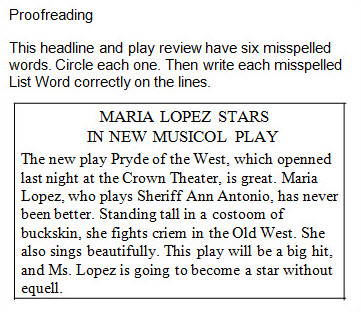
1⠀⠀⠀⠀⠀,pro(r1d+
2⠀⠀⠀⠀⠀,? h1dl9e & play review h six
3⠀⠀⠀⠀⠀misspell$ ^ws4 ,circle ea* "o4 ,!n
4⠀⠀⠀⠀⠀write ea* misspell$ ,li/ ,^w
5⠀⠀⠀⠀⠀correctly on ! l9es4
6⠀7777777777777777777777777777777777777777
7⠀⠀⠀⠀⠀⠀⠀⠀⠀,,,maria lopez stars in
8⠀⠀⠀⠀⠀⠀⠀⠀⠀⠀⠀⠀new musicol play,'
9⠀⠀⠀⠀⠀⠀⠀⠀⠀⠀⠀⠀⠀⠀⠀⠀⠀⠀⠀⠀⠀⠀⠀⠀⠀⠀⠀⠀⠀⠀⠀⠀⠀⠀⠀⠀⠀⠀⠀⠀⠀
10 ,the new play ,pryde of the ,west1 which
11 openned last night at the ,crown
12 ,theater1 is great4 444 ,this play will
13 be a big hit1 and ,ms4 ,lopez is going
14 to become a star without equell4
15 gggggggggggggggggggggggggggggggggggggggg
16 ⠀⠀⠀⠀⠀⠀⠀⠀⠀⠀⠀⠀⠀⠀⠀⠀⠀⠀⠀⠀⠀⠀⠀⠀⠀⠀⠀⠀⠀⠀⠀⠀⠀⠀⠀⠀⠀⠀⠀⠀

10 ⠀⠀⠀⠀,r1d ? n>rative & rewrite ! "ul9$
11 ⠀⠀⠀⠀^ws t h be5 spell$ 9correctly4
12 ,/ud5t #a3 ,y "k t new p]son 9 \r
13 ⠀⠀_1sceince class8 ,my _1nieghbor says
14 ⠀⠀he's ! _1hier to a huge =tune6
15 ,/ud5t #b3 ,! _1hier to a huge =tune go+
16 ⠀⠀to public s*ool8 ,t's h>d to
17 ⠀⠀_1beleive4 ,9 fact1 x's pretty
18 ⠀⠀_1inconcievable4
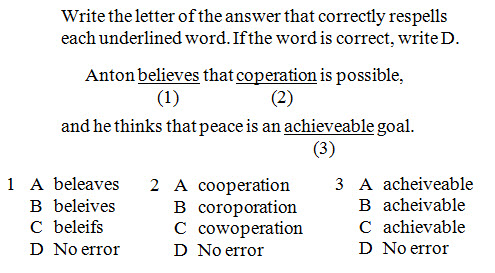
10 ⠀⠀⠀⠀,write ! lr ( ! answ] t correctly
11 ⠀⠀⠀⠀respells ea* "ul9$ ^w4 ,if ! ^w is
12 ⠀⠀⠀⠀correct1 write ;,d4
13 ⠀⠀,anton "<#a"> _1believes t
14 "<#b"> _1coperation is possible1 & he
15 ?9ks t p1ce is an "<#c"> _1achieveable
16 goal4
17 ⠀⠀⠀⠀⠀⠀⠀⠀⠀⠀⠀⠀⠀⠀⠀⠀⠀⠀⠀⠀⠀⠀⠀⠀⠀⠀⠀⠀⠀⠀⠀⠀⠀⠀⠀⠀⠀⠀⠀⠀
18 #a
19 ⠀⠀,a beleaves
20 ⠀⠀;,b beleives
21 ⠀⠀;,c beleifs
22 ⠀⠀;,d ,no ]ror
23 #b
24 ⠀⠀444

1⠀⠀⠀⠀⠀,^w ,ma?
2⠀⠀⠀⠀⠀,complete ea* equa;n to make a ^w
3⠀⠀⠀⠀⠀li/4
4⠀⠀⠀⠀⠀⠀⠀@.<,symbols us$3
5⠀⠀⠀⠀⠀⠀⠀⠀⠀⠀⠀⠀⠀⠀⠀⠀⠀⠀⠀⠀⠀⠀⠀⠀⠀⠀⠀⠀⠀⠀⠀⠀⠀⠀⠀⠀⠀⠀⠀⠀⠀
6⠀.="6 ,plus sign
7⠀.="7 ,equals sign
8⠀.="- ,m9us sign@.>
9⠀⠀⠀⠀⠀⠀⠀⠀⠀⠀⠀⠀⠀⠀⠀⠀⠀⠀⠀⠀⠀⠀⠀⠀⠀⠀⠀⠀⠀⠀⠀⠀⠀⠀⠀⠀⠀⠀⠀⠀⠀
10 #a4 besides "- sides "6 fore "7 .-
11 #b4 belief "- ief "6 ong "7 .-
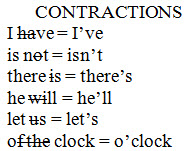
1⠀⠀⠀⠀⠀⠀⠀⠀⠀⠀⠀⠀⠀⠀⠀⠀,,3trac;ns
2⠀⠀⠀⠀⠀⠀⠀⠀⠀⠀⠀⠀⠀⠀⠀⠀⠀⠀⠀⠀⠀⠀⠀⠀⠀⠀⠀⠀⠀⠀⠀⠀⠀⠀⠀⠀⠀⠀⠀⠀⠀
3⠀⠀⠀⠀⠀⠀⠀@.<,^ws ) cross$-\ lrs >e
4⠀⠀⠀⠀⠀uncontract$1 !n rep1t$ ) a hyph5
5⠀⠀⠀⠀⠀sub/itut$ = ea* cross$-\ lr4 ,!
6⠀⠀⠀⠀⠀rep1t$ ^w is 5clos$ )9 transcrib]'s
7⠀⠀⠀⠀⠀note 9dicators4@.>
8⠀⠀⠀⠀⠀⠀⠀⠀⠀⠀⠀⠀⠀⠀⠀⠀⠀⠀⠀⠀⠀⠀⠀⠀⠀⠀⠀⠀⠀⠀⠀⠀⠀⠀⠀⠀⠀⠀⠀⠀⠀
9⠀,i have @.<--ve@.> "7 ,i've
10 is not @.<n-t@.> "7 isn't
11 there is @.<-s@.> "7 there's @.<"!'s@.>
12 he will @.<--ll@.> "7 he'll
13 let us @.<-s@.> "7 let's
14 of the @.<o- ---@.> clock "7 o'clock

1⠀⠀⠀⠀⠀⠀⠀⠀⠀⠀⠀⠀⠀,mak+ ,new ,^ws
2⠀⠀⠀⠀⠀⠀⠀⠀⠀⠀⠀⠀⠀⠀⠀⠀⠀⠀⠀⠀⠀⠀⠀⠀⠀⠀⠀⠀⠀⠀⠀⠀⠀⠀⠀⠀⠀⠀⠀⠀⠀
3⠀⠀⠀⠀⠀⠀⠀@.<,symbols us$3
4⠀⠀⠀⠀⠀⠀⠀⠀⠀⠀⠀⠀⠀⠀⠀⠀⠀⠀⠀⠀⠀⠀⠀⠀⠀⠀⠀⠀⠀⠀⠀⠀⠀⠀⠀⠀⠀⠀⠀⠀⠀
5⠀.=@- ,macron abv foll[+ lr
6⠀.="6 ,plus sign
7⠀.="7 ,equals sign
8⠀.="- ,m9us sign@.>
9⠀⠀⠀⠀⠀⠀⠀⠀⠀⠀⠀⠀⠀⠀⠀⠀⠀⠀⠀⠀⠀⠀⠀⠀⠀⠀⠀⠀⠀⠀⠀⠀⠀⠀⠀⠀⠀⠀⠀⠀⠀
10 ⠀⠀⠀⠀,direc;ns3 ,make new ^ws f old "os
11 ⠀⠀⠀⠀by add+ & subtract+ %ort v[els
12 ⠀⠀⠀⠀"<_/a_/1 _/e_/1 _/i_/1 _/o_/1 &
13 ⠀⠀⠀⠀_/u_/">1 l;g v[els "<_/@-i_/1
14 ⠀⠀⠀⠀_/@-a_/1 _/@-o_/1 & _/@-e_/">1 &
15 ⠀⠀⠀⠀3sonants4 ,! spell+ ( "s ^ws w *ange
16 ⠀⠀⠀⠀q a bit ) ! new v[el4 444
17 ⠀⠀⠀⠀⠀⠀⠀⠀⠀⠀⠀⠀⠀⠀⠀⠀⠀⠀⠀⠀⠀⠀⠀⠀⠀⠀⠀⠀⠀⠀⠀⠀⠀⠀⠀⠀⠀⠀⠀⠀
18 ,l ?3
19 ,pete "- _/@-e_/ "6 _/e_/ "7 pet
20 ⠀⠀⠀⠀⠀⠀⠀⠀⠀⠀⠀⠀⠀⠀⠀⠀⠀⠀⠀⠀⠀⠀⠀⠀⠀⠀⠀⠀⠀⠀⠀⠀⠀⠀⠀⠀⠀⠀⠀⠀
21 #a4 boat "- _/b_/ "6 _/v_/ "7 .-
22 #b4 kid "- _/i_/ "6 _/@-o_/ "7 .-

1⠀⠀⠀⠀⠀⠀⠀⠀⠀,g5]al ,rules = ,plurals
2⠀⠀⠀⠀⠀⠀⠀⠀⠀⠀⠀⠀⠀⠀⠀⠀⠀⠀⠀⠀⠀⠀⠀⠀⠀⠀⠀⠀⠀⠀⠀⠀⠀⠀⠀⠀⠀⠀⠀⠀⠀
3⠀⠀⠀⠀⠀⠀⠀@.<,symbols us$3
4⠀⠀⠀⠀⠀⠀⠀⠀⠀⠀⠀⠀⠀⠀⠀⠀⠀⠀⠀⠀⠀⠀⠀⠀⠀⠀⠀⠀⠀⠀⠀⠀⠀⠀⠀⠀⠀⠀⠀⠀⠀
5⠀.=\o ,"r >r[
6⠀.="6 ,plus sign@.>
7⠀⠀⠀⠀⠀⠀⠀⠀⠀⠀⠀⠀⠀⠀⠀⠀⠀⠀⠀⠀⠀⠀⠀⠀⠀⠀⠀⠀⠀⠀⠀⠀⠀⠀⠀⠀⠀⠀⠀⠀⠀
8⠀⠀⠀⠀⠀,,,if ! n\n 5ds in,'3 ch1 ;s1 sh1
9⠀⠀⠀⠀⠀;x1 or ;z
10 ,,!n ,,g5]ally3 add -es
11 ,,example3
12 ⠀⠀crutch ;\o crutches
13 ⠀⠀wish ;\o wishes
14 ⠀⠀⠀⠀⠀⠀⠀⠀⠀⠀⠀⠀⠀⠀⠀⠀⠀⠀⠀⠀⠀⠀⠀⠀⠀⠀⠀⠀⠀⠀⠀⠀⠀⠀⠀⠀⠀⠀⠀⠀
15 ⠀⠀⠀⠀,,,if ! n\n 5ds in3,' a 3sonant "6
16 ⠀⠀⠀⠀;y
17 ,,!n ,,g5]ally3 *ange ;y to i & add -es
18 ,,example3
19 ⠀⠀baby ;\o babies